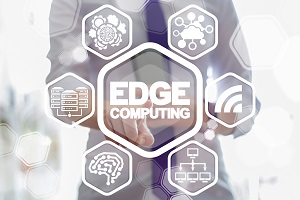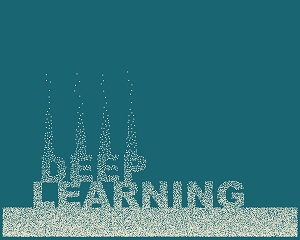[SPONSORED POST] With the transformation of medicine from analog to digital, plus the rise of new data-generating devices for health tracking and genomic information, we can look forward to a new world in which virtually every aspect of a patient’s medical history can be communicated, stored, and manipulated. For each patient, this huge body of data represents a sort of digital twin, a treasure trove of useful medical information and insights that could become invaluable in developing patient treatments in the future.
Future 5G Performance Depends on Today’s Mobile Edge
While mobile carriers promote their ability to offer 5G wireless networks, users are still waiting on that next killer app that delivers the promised performance. This article, by Raul Martynek, CEO of DataBank, examines the four critical components that are required so mobile edge computing can enable true 5G performance.
Emza and Alif Demonstrate Fast, Ultra-Efficient Object Detection for Tiny AI Edge Devices
Emza Visual Sense, a pioneer in Tiny AI visual sensing, is joining with Alif Semiconductor to show how the combination of powerful, highly efficient Arm®-based hardware and optimized models can make AI a reality at the edge. The companies are demonstrating Emza’s trained face detection model running on Alif’s Ensemble™ microcontroller (MCU), the first MCU featuring the Arm Ethos™-U55 microNPU. The Emza model runs an order of magnitude faster on the Ensemble device with Ethos-U55 compared to a CPU-only solution, with extremely low power consumption.
Hewlett Packard Enterprise Ushers in Next Era in AI Innovation with Swarm Learning Solution Built for the Edge and Distributed Sites
Hewlett Packard Enterprise (NYSE: HPE) announced the launch of HPE Swarm Learning, a breakthrough AI solution to accelerate insights at the edge, from diagnosing diseases to detecting credit card fraud, by sharing and unifying AI model learnings without compromising data privacy.
Edge Computing: The Future of Data Storage
In this contributed article, Dr. Tong Zhang, Co-founder and Chief Scientist, ScaleFlux, discusses the momentum of edge computing technology and how storage is fueling its next wave. The implications of edge computing are far-reaching and will be felt by businesses and consumers alike. By ushering in the adoption of edge computing, enterprises and end-users can expect possibilities like never before.
Navigating Driver Privacy and Safety of Electric Vehicles, Self-Driving Vehicles
A growing number of connected electric vehicles, as well as the evolution of self driving and automated vehicles are putting a greater demand on processing power. New technologies are advancing rapidly with the introduction of new processing methods, according to experts at BrainChip Holdings Ltd (ASX: BRN), (OTCQX: BRCHF), a leading provider of ultra-low power high performance artificial intelligence technology.
MLOps: Bringing AI to the Tactical Edge—and Making It Work
In this contributed article, Joel Dillon and Eric Syphard of Booz Allen, feel strongly that in order for machine learning to have a profound impact on data sharing for defense and the intelligence community, it’s imperative that data get communicated to warfighters at the tactical edge, where fast decisions are at a premium and compute power and connectivity are often scarce. It is critical that these edge use cases characterize and shape planning for AI and ML-driven investment as digitization continues to accelerate the pace of war.
Surpassing Decentralized Data Management Woes with Data Virtualization
In this contributed article, editorial consultant Jelani Harper discusses how data virtualization enables organizations to surmount obstacles (i.e. data quality, schema, and data integrations that are foundational to data management) and to focus on benefits (i.e. remote collaborations characteristic of working from home, the takeoff of the cloud as the de facto means of deploying applications, and the shift to external sources of unstructured and semi-structured data). Supplementing it with mutable graph data models boosts its applicability to data of all types.
Innovative AI Edge Device Cuts Costs and Delivers Faster Performance
Leopard Imaging has been working to address the need for affordable multiprocessing power in deep learning applications. Using Socionext’s SC2000 image signal processor and the Hailo-8™ M.2 AI acceleration module, Leopard Imaging’s EdgeTuring™ consumes less power, performs at a higher level, and ensures greater reliability for video analytics and privacy at the edge than alternative solutions.
Research Highlights: Attention Condensers
A group of AI researchers from DarwinAI and out of the University of Waterloo, announced an important theoretical development in deep learning around “attention condensers.” The paper describing this important advancement is: “TinySpeech: Attention Condensers for Deep Speech Recognition Neural Networks on Edge Devices,” by Alexander Wong, et al. Wong is DarwinAI’s CTO.












